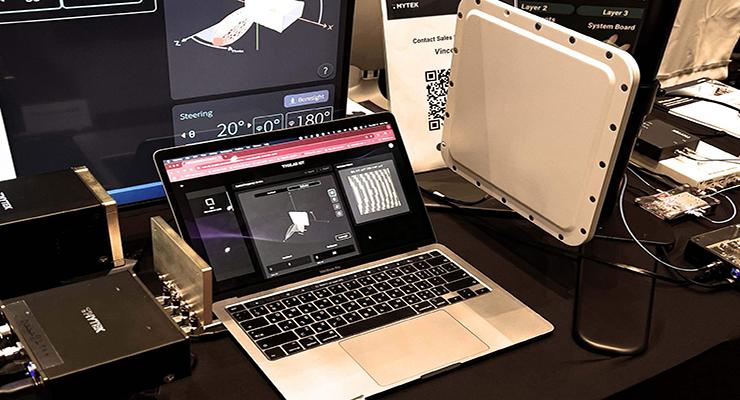The IEEE Phased Array conference occurred in Boston on October 15-17, 2024. This specialized conference had a small exhibit floor. Here is some of what was on display.
Boston — The 2024 IEEE International Symposium on Phased Array Systems & Technology moved into the city after taking place in a suburban Boston hotel for several years. Commonly known as “Array,” this conference featured three days of technical sessions and a small tabletop trade show. Despite Array 2024 being so specialized, it still featured plenty of technical sessions, plenary sessions, and poster sessions covering antennas, signal processing, and systems for 5G, satellite, and Radar. Topics included:
- Beamforming in a Multifunctional Fully Digital Phased Array
- An Ultra-Wideband Fully-Planar Inverted-L Element (FILE) Array with Dual-Polarization and Optimal Sampling
- A Novel Wideband Circularly Polarized Unit-cell for TransmitArrays in X-band and Ka-band
- A 23-46 GHz Dual-Polarized 4×2 Planar Phased Array for Portable 5G FR-2 Applications
- Analysis of Low-Frequency Radio Array Mapping of D-Region Electron Densities and HF Absorption
- Enhancing 5G Millimeter-Wave Multiband Capabilities with Optimized Microstrip 4×4 Array Antenna
- 80GHz Automotive Radar Antenna Module Fabricated Using Electrochemical Additive Manufacturing
In addition to the sessions, Array 2024 featured a tabletop exhibit hall.
Analog Devices
Timing in networks is essential in assuring that data arrives in the shortest possible time. With phased-array systems, accurate timing assures that beams point to the desired location at the right time. While Analog Devices manufactures ICs for phased arrays, the company was demonstrating how to synchronize two of its Apollo MxFE Quad, 16-bit, 28 GSa/sec RF DAC and Quad, 12-bit, 20 GSa/sec RF ADC SoCs for software-defined radio. The demonstration aimed to show how to build a phased array system that used eight DACs and ADCs for applications requiring more than 2×2 4×4 arrays.
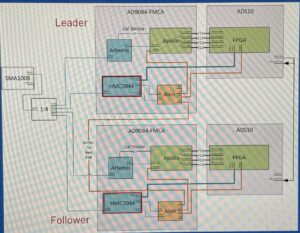 |
Annapolis Micro Systems
Phased arrays require considerable computational power to adjust a beam’s amplitude and phase as a target moves relative to the base station or radar antenna. Annapolis Micro Systems provides modules you can add to your system for that purpose. The photo on the right is a close-up of the company’s WILDSTAR SAF1 Small Form Factor module. It includes a quad-core A53 Arm processor and an Intel AgileX AGRW014 FPGA, adding four ADC and four DAC channels.
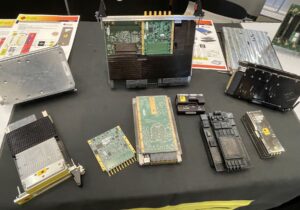 |
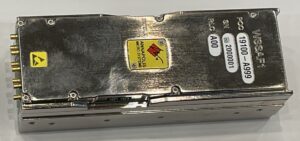 |
Fortify
Boston-based Fortify designs and manufactures antenna lenses, passive devices that steer RF beams to desired locations, increasing signal strength. Applications include switch beam array antennas, field-of-view enhancing lenses, and radomes.
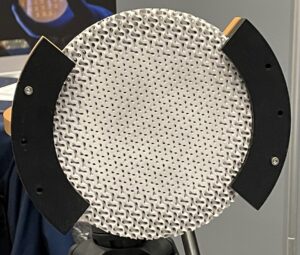 |
 |
Keysight Technologies
Although Keysight didn’t include measurement equipment at Array 2024, the company showed software for designing and simulating phased arrays. Using digital twins, Keysight simulated a system’s response, showing magnitude as a function of phase angle.
 |
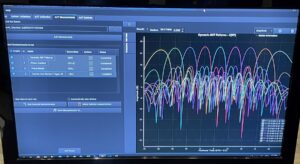 |
Micro Mode
RF/microwave/mmWave cable manufacturer Micro Mode showed samples of its cable assemblies for military and aerospace applications. The machined house shown in the right-side photo is a custom device that hermetically seals RF components in harsh conditions.
 |
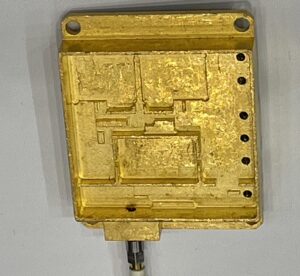 |
NI
NI exhibited a PXI-based modular test system that characterizes RF components used in phased array systems.
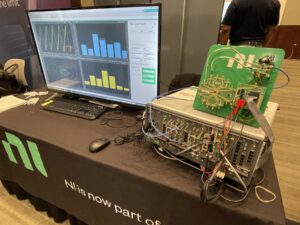 |
Quantic
The Quantic table contained numerous components, such as capacitors and magnetics. The photo at right shows a 92,000 µF capacitor. It’s heavier than you think.
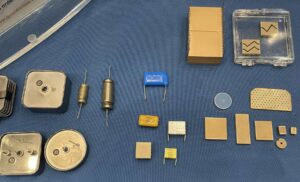 |
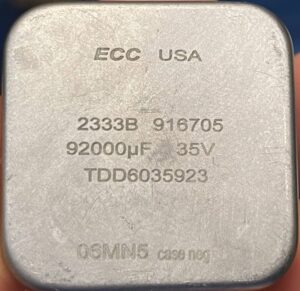 |
Rohde & Schwarz
Making its first appearance at IEEE Array, test equipment company Rohde & Schwarz showed its capabilities by characterizing an RF mixer. The test setup consisted of a ZNA vector-network analyzer and a ZC110 mmWave converter. The ZC110 extends the VNA’s frequency to between 75 GHz to 110 GHz.
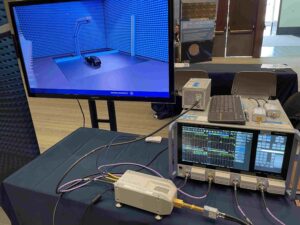 |
 |
Samtec
The connector company displayed many of its high-frequency connectors and cable assemblies. Of course, the tigers were there, too.
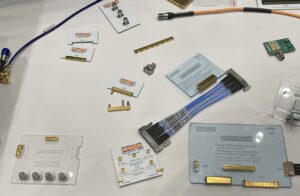 |
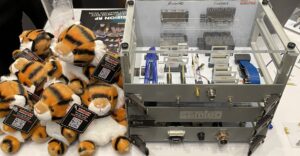 |
TMYTEK
mmWave specialist TMYTEK exhibited its XRifle Dynamic reconfigurable intelligent surface (RIS). Targeting 4.7 GHz and 28 GHz, the XRifle can increase signal strength by redirecting mmWave signals around corners to wireless devices. The software lets you set the direction simply by dragging the virtual beam. You can also develop your application through a programming interface. Designed as a development tool, the RIS works with VNAs for you to characterize multipath environments.
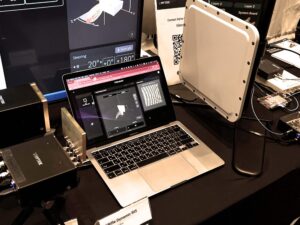 |

